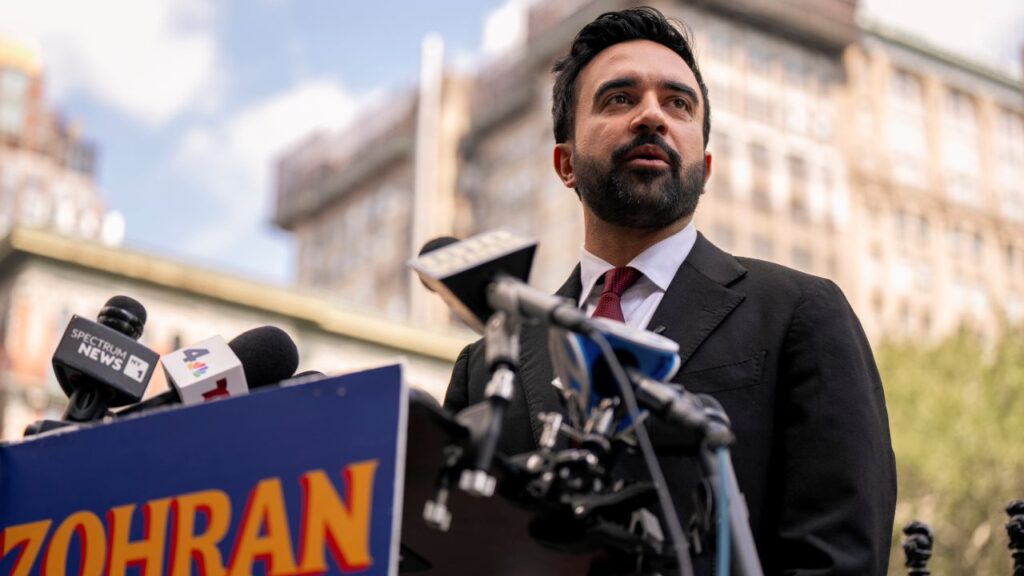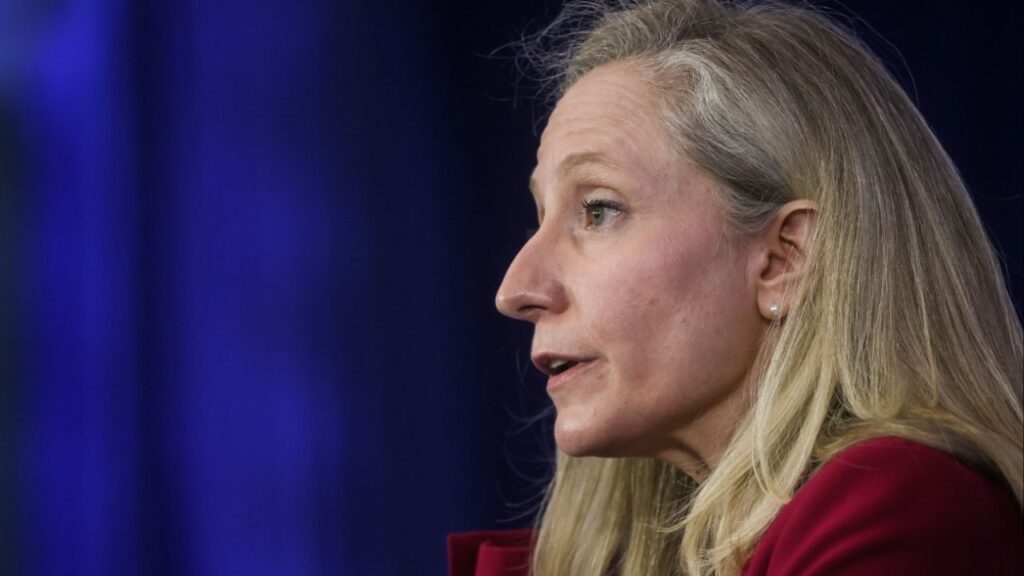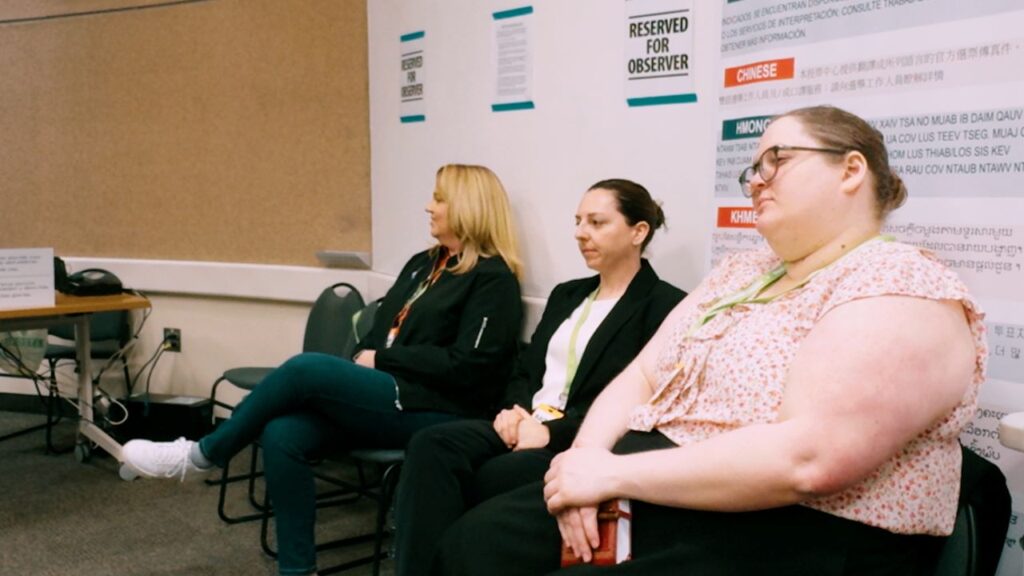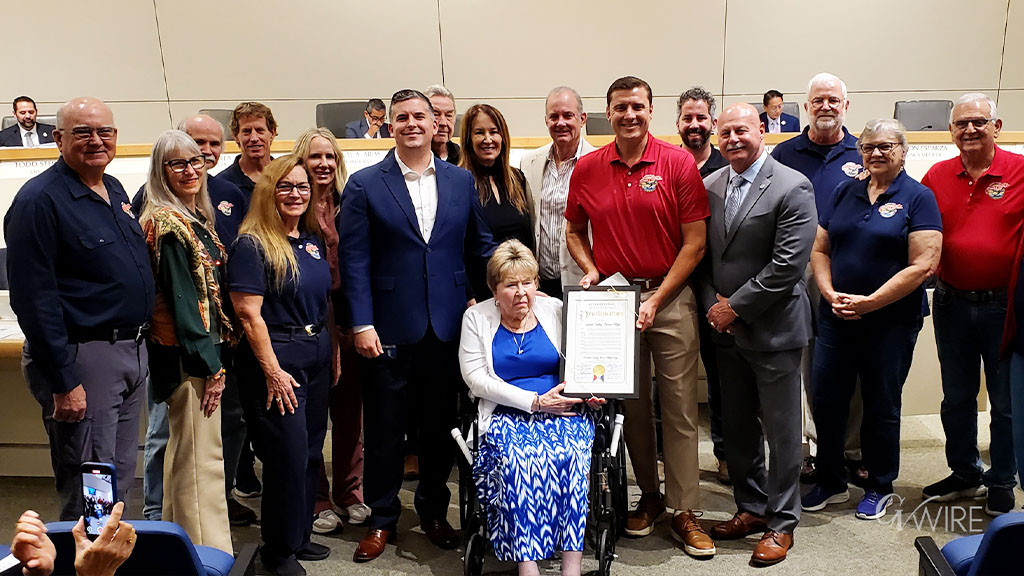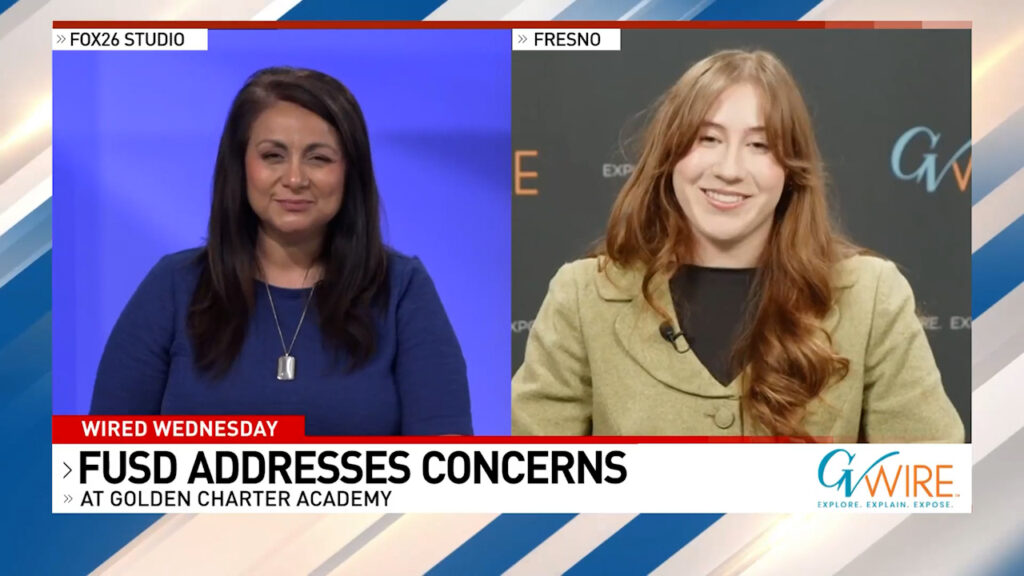A Clovis Unified preschooler buys groceries at the pretend farmers market in the district’s hands-on interactive farm exhibit, which is meant to engage students in dramatic play, a form of arts education, Sept. 25, 2025. (EdSource/Lasherica Thornton)

- Clovis Unified finds innovative ways to engage preschool students in the arts.
- One example is a farm exhibit with a big red barn and pretend horses to ride on. Next semester, there will be an outer space exhibit.
- This academic year, the district received $7 million in Prop. 28 funding, up from $6 million.
Share
|
Getting your Trinity Audio player ready...
|
At first glance, preschool students in the Clovis Unified School District in Fresno County don’t appear to be receiving arts education. They are inside a farm exhibit with a big red barn and pretend horses to ride on.

Lasherica Thornton
EdSource
Look more closely, and it’s an innovative way to provide arts education to the district’s youngest students. Built inside a 1,440-square-foot classroom on the Buchanan High School campus, the exhibit is a place where 3- and 4-year-olds dress up, pretend, and make music. Sounds of cows and sheep echo from overhead speakers.
“I want to be a cow,” one preschooler told his teacher.
Clovis Unified district leaders are using about $150,000 of the $7 million the district receives in state arts funding, granted by Proposition 28, to bring arts, music and theater education to the preschool program through the interactive exhibit. Next semester, the same exhibit will be transformed into outer space.
This story was originally published by EdSource. Sign up for their daily newsletter.
For preschoolers, it is an opportunity to more deeply explore dramatic play — a form of arts education — and get hands-on exposure to visual and performing arts.
“We’ve been very conscientious about ensuring that we are creating new opportunities,” district spokesperson Kelly Avants said.
Related Story: What Is Sanger Unified’s Secret Sauce? Engaging Instruction, Focus on Student ...
What Is Proposition 28?
The state’s Proposition 28, or Arts and Music in Schools — Funding Guarantee and Accountability Act, set aside roughly $1 billion a year in additional funding for arts education programs in TK-12 public and charter schools. Voters approved the historic arts mandate in 2022, and districts started receiving the money in 2024.
Most of the funding, at least 80%, is intended to pay for school staff to provide arts education. And up to 20% is for arts education support, including training, supplies, materials and partnerships.
For the 2023-24 school year, based on the Prop. 28 annual report, Clovis Unified, which has over 43,000 students, hired more staff, including arts teachers, and purchased equipment, such as speakers for outdoor student performances.
Clovis Unified Gets a Prop 28 Boost
This academic year, the school district received $7 million in Prop. 28 funding, up from $6 million last year.
A Preschool Visual Arts Program
Clovis Unified’s preschool Visual and Performing Arts program helps with students’ language, literacy, social-emotional development and motor coordination, said Rene Shelton, the lead preschool teacher at Mickey Cox Elementary.
To meet the Prop. 28 requirements, Clovis Unified had to find a way to expand its arts education beyond its current offerings, such as student-led musicals and plays, band, orchestra and choir, as well as dance and art classes.
Last school year, with its Prop. 28 funding, Clovis Unified created a new preschool program called Visual and Performing Arts, or VAPA, which is often a department for older students.
The farm exhibit that preschoolers are visiting this year is a step up from the mobile exhibit the district provided last year, which traveled to preschool classes, according to Briana Ortega, the VAPA department’s assistant teacher.
“You can only bring so many activities” in a sprinter van, Ortega said.
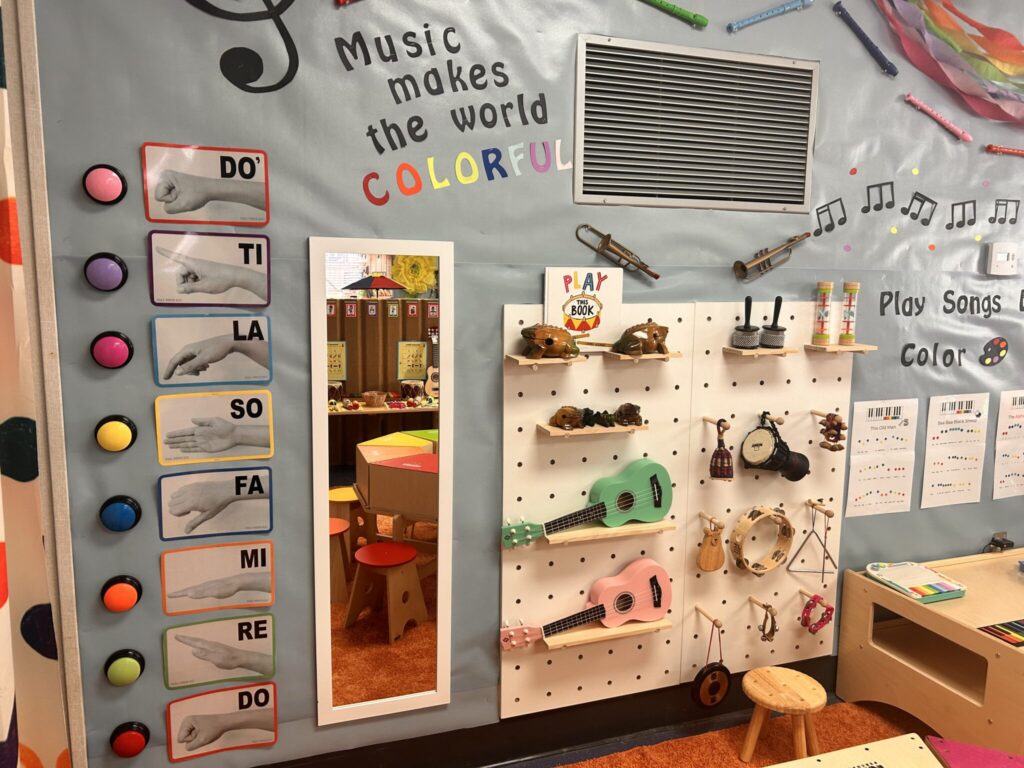
At the farm exhibit one morning, some children dismantled a tractor at the repair shop, playing with a screwdriver, hammer, hacksaw, and more tools, while other students ran the pretend farmers market and ice cream stand or visited as customers.
Rene Shelton, a preschool lead teacher at Mickey Cox Elementary, said she was in awe at seeing her students engaged as they entered the pretend world. One student, for example, audibly slurped his pretend ice cream.
“I can hear their conversations,” she said.
In another part of the exhibit, kids try out instruments such as guitars and drums. The space is set with numbers, colors and patterns for the preschoolers to use. For example, students can play a color-coded keyboard. Separately, on the wall, students can push colorful buttons to hear “Do, Re, Mi, Fa, So, La, Ti, Do.”
A small theater area is also available for kids to create their own show using puppets or sit in the audience with make-believe popcorn.
This creative approach to using Prop. 28 funds for the district’s youngest learners could be a model for other districts, said district staff, especially as the initiative is intended to make arts education accessible to all.
About the Author
About the Author
Lasherica Thornton covers education in California’s Central Valley. Follow her on X @LashericaT
RELATED TOPICS:
Categories

Takeaways From US Election Night 2025







